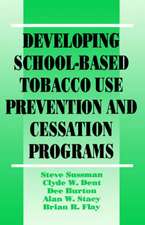Emergency Management – Concepts and Strategies for Effective Programs, Second Edition
Autor LG Cantonen Limba Engleză Hardback – 20 mai 2019
Preț: 789.44 lei
Preț vechi: 830.99 lei
-5% Nou
Puncte Express: 1184
Preț estimativ în valută:
151.08€ • 157.15$ • 124.72£
151.08€ • 157.15$ • 124.72£
Carte tipărită la comandă
Livrare economică 14-28 aprilie
Preluare comenzi: 021 569.72.76
Specificații
ISBN-13: 9781119066859
ISBN-10: 1119066859
Pagini: 352
Dimensiuni: 179 x 261 x 20 mm
Greutate: 0.86 kg
Ediția:2nd Edition
Editura: Wiley
Locul publicării:Hoboken, United States
ISBN-10: 1119066859
Pagini: 352
Dimensiuni: 179 x 261 x 20 mm
Greutate: 0.86 kg
Ediția:2nd Edition
Editura: Wiley
Locul publicării:Hoboken, United States
Notă biografică
LUCIEN G. CANTON, CEM, CPP CBCP, has over 40 years' experience in hazard and risk analysis, loss reduction, and emergency planning. As the Director of Emergency Services for the City of San Francisco from 1996 to 2004, he was responsible for coordinating the City's emergency management program and served as a policy advisor on emergency management and Homeland Security issues. Prior to his appointment, Mr. Canton was an Emergency Management Specialist with the Federal Emergency Management Agency from 1990 to 1996.
Cuprins
Preface to the Second Edition xiii Preface to the First Edition xv Introduction xvii 1 Historical Perspectives: The Evolution of Emergency Management 1 Why Study History? 2 Lessons from History 5 The Advent of Disaster Legislation 14 The Growth of Disaster Bureaucracy 22 From Military to Civilian Leadership 23 Civil Defense and Disaster Relief Merge 27 Conclusion 32 2 Historical Perspectives: Toward a National Response Strategy 33 The Origins of National Planning 34 September 11 and the Impact of Homeland Security 36 The Marginalization of Emergency Management 36 Capabilities-based Planning Replaces All-Hazards Planning 39 The Pendulum Swings Back: Hurricane Katrina 43 A Failed Response? 43 Degraded Capabilities and Confused Planning 45 Reform and New Planning Concepts 47 Conclusion 49 3 Social Science and the Beginnings of Emergency Management Theory 51 Social Science as an Emergency Management Tool 51 Social Science Evolves Emergency Management Theory 52 Emergencies, Disasters, and Catastrophes 54 Disaster Mythology 65 Organizational Response 69 Conclusion 71 4 The Emergency Manager: Evolving Roles and Shifting Paradigms 73 Conflicting Roles 74 The Emergency Manager as Program Manager 78 Toward Professionalization 84 Emergency Management as a Field 84 Emergency Management as a Discipline 88 Emergency Management as a Profession 89 Conclusion 90 5 Establishing the Emergency Management Program 93 Program Administration 94 Developing a Governance Structure 94 The Administrative Plan 99 Strategic Planning 99 Formulating Vision 101 Establishing Goals and Objectives 106 Developing the Strategic Plan 108 Enabling Authorities and Legislation 109 Grant Requirements 111 Best Practices 112 Program Elements 113 Resource Management 113 Training 115 Finance 116 Program Evaluation 118 Quantitative Assessment Tools 118 Qualitative Assessment Tools 119 Exercise Programs 120 Actual Incidents 123 Corrective Action Program 124 Conclusion 125 6 Assessing Risk 127 The Nature of Risk 128 Risk Assessment Methodologies 129 Hazard Identification 133 Hazard Analysis 140 Simple Matrix Analysis 140 Indicators and Numerical Ranking 143 THIRA and Context Analysis 148 Intuition 149 Impact Analysis 150 Business Impact Analysis (BIA) 150 Adaptive Business Continuity 154 Continuity of Government/Continuity of Operations 155 Federal Guidance 155 Critical Functions and Process Analysis 158 Conclusion 160 7 Developing Strategy 163 A New Look at an Old Model 164 Risk Management Strategy 166 Mitigation Strategy 168 Recovery Strategy 173 Response Strategy 180 Preparedness Strategy 185 Using Strategy to Guide Planning 187 Conclusion 189 8 Planning Concepts 191 Plans Versus Planning 191 The Planning Continuum 197 Planning Methodologies 201 Planning Assumptions 201 Scenario-Based Planning 202 Functional Planning 205 Capabilities-Based Planning 207 Effective Planning 208 Simplicity in Planning 209 Operational Phases 210 All-Hazards Planning 212 Decentralized Execution 212 Putting the Pieces Together 214 General Planning Principles 215 Conclusion 217 9 Planning Techniques and Methods 219 Establish a Planning Structure 219 Use a Meeting Facilitation Process 222 Meeting Agenda 225 Conducting the Meeting 226 The Meeting Memorandum 227 Develop an Action Plan and Set Deadlines 229 Managing Multiple Projects 230 Annual Work Plans 230 Graphic Planning Tools 231 Facilitate Decision-Making 232 Use Common Plan Formats 234 Determining Plan Content 236 Use Graphic Tools 238 Use Exercises to Test Concepts 242 Keep it Simple 244 Conclusion 245 10 Coordinating Response 247 Operational Response 247 Incident Management Systems 251 Unified and Area Commands 256 Multiagency Coordination Systems 258 Emergency Operations Centers 264 Communications and Interoperability 269 Information Processing 272 Mutual Aid 273 Resource Management and Logistics 274 The Joint Information Center 276 Conclusion 278 11 Leading in Crisis 279 Principles of Emergency Management 280 Program Leadership 282 Building a Leadership Team 282 Establishing Relationships 284 Making Decisions 285 Operational Leadership 286 The Effects of Crisis 286 Barriers to Decision-Making 287 Crisis Decision-Making 289 Conclusion 291 12 Crisis Management 293 Barriers to Crisis Management 294 Disengagement and Inexperience 294 Common Leadership Problems 295 Appropriate Roles for Senior Officials 297 Crisis Management 299 Identifying the Crisis 299 Isolating the Crisis 300 Preparing for Crisis Management 301 Hurricane Katrina: Crisis Management Failure 302 Increasing Organizational Effectiveness 304 Crisis Communications 305 Strategic Recovery Issues 307 Catastrophic Events 312 Conclusion 315 Conclusion 317 Bibliography 321 Index 327


























